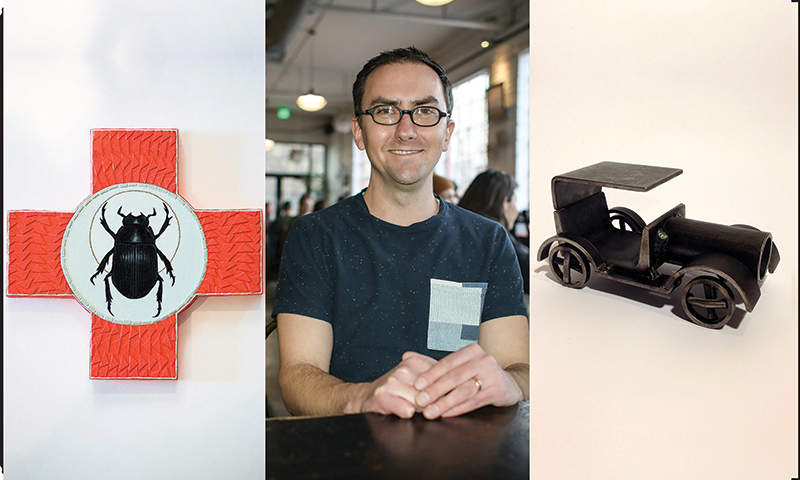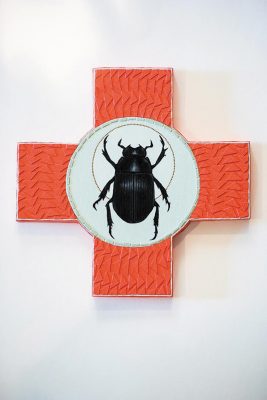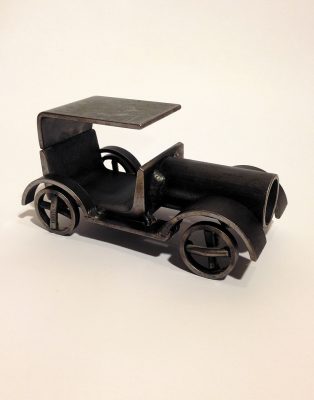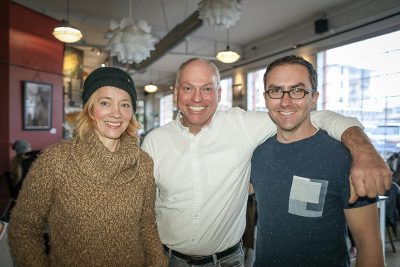
Finding a Home: Art Makes an Impact at the Rio Gallery
Art
From Jan. 19 through March 10, Art In The Home will show at the Rio Gallery. The brainchild of local professional artist and curator Clinton Whiting, Art In The Home is a meditation on the powerful impact that owning original works can sustain for families who might not otherwise access them. The show includes 14 Utah artists’ works that were given to local families in a trade for a personally meaningful item. The art appears alongside the traded items with statements from the art recipients about owning the work, imparting a creatively complex narrative to the exhibition. As Art In The Home was coming together, Whiting discussed the origins, process and emerging outcomes of the show.

“My ideal family was the working poor,” he says as to the anonymous art recipients he worked with on the project—“people who appreciate art but can’t afford to go out and buy a piece.” Whiting procured art and provided it to families in October, such that they would have at least a month to explore how the presence of the pieces impacted them. Participants would respond with a questionnaire on the power of having professional artworks in their home. “There’s three categories of people that I’ve given to. I had two qualifying factors: They wouldn’t have any original artwork on their walls, and they couldn’t especially afford it. I went by occupation rather than income … I even gave artwork to my mailman.” The artists and recipients were selected through Whiting’s contacts in the fine art world as well as his everyday life and suggestions made to him by colleagues and acquaintances.
The original vision for the exchange was for recipients to share an item not based on monetary value but on individual or family meaning, within reason. Whiting was surprised by the dynamics of the bartering system the project established. “I’ve been impressed by the objects people have given,” he says. “The trades by the participant have been mind-boggling. One of the very first paintings I traded … the recipient was deciding between three items to trade, and the one she chose was the hardest to give up. It’s a bottle of soda she’s been carrying around for 10 years! She bought it in Peru, and it reminds her of all her adventures down there.” It’s apparent that the still emerging impact of the project has surprised not only the recipients and artists but Whiting himself. This simple yet deeply meaningful item was given to artist Stephanie Hock and was paired with her painting Reaching. “This was the very first trade I made in this project,” Whiting says. “I feel it set a very good tone for all the trades and experiences that have followed.” The trades range from oddities to treasures held by the families for years, including an old tin filled with oily rags and an aged cowboy hat. “This hat was traded by an actual cowboy for a landscape painting by Steve McGinty,” Whiting says.
Whiting notes yet another of his favorite pieces in the show, Scarab by artist Hilary Jacobsen. “Not only because I love the painting but also … the effect the trade has had on the man who traded it,” Whiting says. The man traded a toy car welded together by his father. “This object represents all the good and happy times I had growing up and living with my family,” the man says in his statement. “I do find that the piece makes me think about the object. What they represent is rather different, so they are linked in my mind primarily because they were exchanged for each other … While this piece of art has come to represent the future for me, my father’s sculpture of an outdated automobile represents the past …”

Regarding the underlying messages of class, culture and social systems beneath the show, “I’m not too much of a political guy, but I am very much a social-justice guy,” Whiting says. “There are undertones about elitism and class. I feel original art is for everyone.” There’s a powerful mission in the message of Art In The Home, one that seeks to increase the value we place on artworks and the accessibility of ownership. “Some families don’t put a priority on it because they have to feed themselves,” Whiting says. “Most artists want their art to be seen. In my mind, the collectorship of art needs to grow. I think galleries should be on board with this—it increases the visibility. A lot of families feel it’s out of their reach, [and] it’s just not available.”
At the time of interview, the show was being installed a week later and opening in two, and Whiting was still collecting trade items and responses. “I’m still figuring it all out,” he says, “just what this show means.” What Whiting hopes visitors will take from the show lies in the recipients’ reflection on the art that lived with them. “Read the responses,” he says. “You’ll get a real sense of what the whole event has meant.” The future of the project is also curious and expanding, with the possibility of a second exhibition in the spring at Snow College in collaboration with families in Sanpete County.
Art in the Home is presented by the Utah Division of Arts & Museums and is open through March 10 at the Rio Gallery, 300 S. Rio Grande St. The gallery is open to the public Monday through Friday from 8 a.m. to 5 p.m. with free admission
